Related Research Articles

Frédéric François Chopin was a Polish composer and virtuoso pianist of the Romantic period, who wrote primarily for solo piano. He has maintained worldwide renown as a leading musician of his era, one whose "poetic genius was based on a professional technique that was without equal in his generation".

Ludwig van Beethoven's Piano Sonata No. 8 in C minor, Op. 13, commonly known as Sonata Pathétique, was written in 1798 when the composer was 27 years old, and was published in 1799. It has remained one of his most celebrated compositions. Beethoven dedicated the work to his friend Prince Karl von Lichnowsky. Although commonly thought to be one of the few works to be named by the composer himself, it was actually named Grande sonate pathétique by the publisher, who was impressed by the sonata's tragic sonorities.

Karol Mikuli, also known as Charles Mikuli was a Polish pianist, composer, conductor and teacher. His students included Moriz Rosenthal, Raoul Koczalski, Aleksander Michałowski, Jaroslaw Zieliński, Kornelia Parnas and Heinrich Schenker.
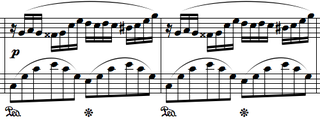
Frédéric Chopin's Fantaisie-Impromptu in C♯ minor, Op. posth. 66, WN 46 is a solo piano composition. It was composed in 1834 and published posthumously in 1855 despite Chopin's instruction that none of his unpublished manuscripts be published. The Fantaisie-Impromptu is one of Chopin's most frequently performed and popular compositions.
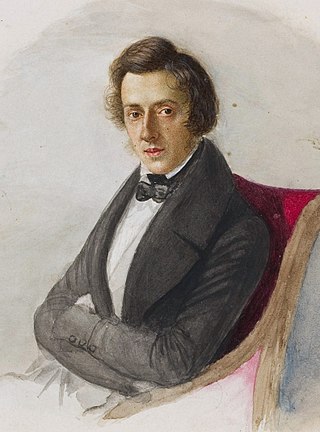
The Piano Sonata No. 2 in B♭ minor, Op. 35, is a piano sonata in four movements by Polish composer Frédéric Chopin. Chopin completed the work while living in George Sand's manor in Nohant, some 250 km (160 mi) south of Paris, a year before it was published in 1840. The first of the composer's three mature sonatas, the work is considered to be one of the greatest piano sonatas of the literature.
G-flat major is a major scale based on G♭, consisting of the pitches G♭, A♭, B♭, C♭, D♭, E♭, and F. Its key signature has six flats.

Ludwig van Beethoven composed his Piano Sonata No. 12 in A♭ major, Op. 26, in 1800–1801, around the same time as he completed his First Symphony. He dedicated the sonata to Prince Karl von Lichnowsky, who had been his patron since 1792.

The Polonaise in A♭ major, Op. 53 for solo piano, was written by Frédéric Chopin in 1842. This composition is one of Chopin's most admired compositions and has long been a favorite of the romantic piano repertoire. Pianist Arthur Rubinstein once called it "the composition which is the closest to my heart." The piece requires exceptional piano skills and great virtuosity to be interpreted at a high degree of proficiency. It is also very physically demanding, and according to his student Adolphe Gutmann, Chopin played it more gently than most performers. The polonaise was dedicated to Auguste Léo, a German banker and friend of Chopin.
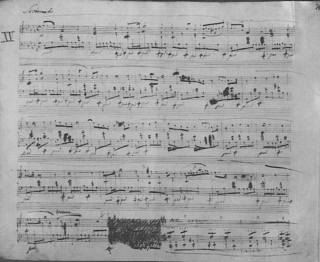
Frédéric Chopin wrote a number of preludes for piano solo. His cycle of 24 Preludes, Op. 28, covers all major and minor keys. In addition, Chopin wrote three other preludes: a prelude in C♯ minor, Op. 45; a piece in A♭ major from 1834; and an unfinished piece in E♭ minor. These are sometimes referred to as Nos. 25, 26, and 27, respectively.
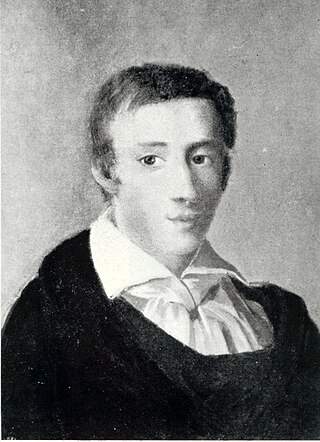
The Piano Sonata No. 1 in C minor, Op. 4 was written by Frédéric Chopin in 1828. It was written during Chopin's time as a student with Józef Elsner, to whom the sonata is dedicated. Despite having a low opus number, the sonata was not published until 1851 by Tobias Haslinger in Vienna, two years after Chopin's death. This sonata is considered to be less refined than the later 2 sonatas, and is thus much less frequently performed and recorded.

The Nocturnes, Op. 9 are a set of three nocturnes for solo piano written by Frédéric Chopin between 1831 and 1832, published in 1832, and dedicated to Madame Marie Pleyel. These were Chopin's first published set of nocturnes. The second nocturne of the work is often regarded as Chopin's most famous piece.

The Studies on Chopin's Études are a set of 53 arrangements of Chopin's études by Leopold Godowsky, composed between 1894 and 1914. They are renowned for their technical difficulty: critic Harold C. Schonberg called them "the most impossibly difficult things ever written for the piano." Several of the studies put the original right-hand part into the left hand; several others are for the left hand alone. Two of the studies even combine two études; the better known of these, called "Badinage," combines both the G♭.
The Rondo à la mazur in F major, Op. 5, was written by Polish composer, Frédéric Chopin in 1826, when he was 16, and published in 1828. It was the second of his four rondos, and is dedicated to the Countess Alexandrine de Moriolles, the daughter of the Comte de Moriolles, who was the tutor to the adopted son of the Grand Duke Constantine, Governor of Warsaw. It is the only one of the four rondos not written in 2/4 time.
The Op. 56 mazurkas by Frédéric Chopin are a set of three mazurkas written for solo piano and presumably written in 1843–1844 and published in 1844. A typical performance of all three mazurkas lasts around 12 minutes.

The Études-Tableaux, Op. 33, is the first of two sets of piano études composed by Sergei Rachmaninoff. They were intended to be "picture pieces", essentially "musical evocations of external visual stimuli". But Rachmaninoff did not disclose what inspired each one, stating: "I do not believe in the artist that discloses too much of his images. Let [the listener] paint for themselves what it most suggests." However, he willingly shared sources for a few of these études with the Italian composer Ottorino Respighi when Respighi orchestrated them in 1930.
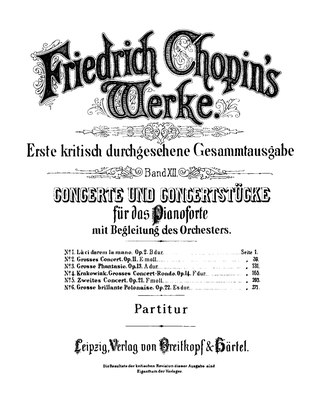
Frédéric Chopin's compositions for piano and orchestra originated from the late 1820s to the early 1830s, and comprise three concert pieces he composed 1827–1828, while a student at the Central School of Music in Warsaw, two piano concertos, completed and premièred between finishing his studies and leaving Poland, and later drafts, resulting in two more published works. Among these, and the other works in the brilliant style which Chopin composed in this period, the concertos are the most accomplished ones.
References
- Notes
- 1 2 3 Cambridge Companion to Chopin p80, Jim Samson. Cambridge University Press, 1994. ISBN 0-521-47752-2 ISBN 9780521477529
- ↑ Walker (2018), p. 69
- ↑ Walker (2018), p. 84
- ↑ Frederick Niecks, "Chopin as a man as a musician"
- Sources
- Walker, Alan (2018). Fryderyk Chopin: A Life and Times. London: Faber ISBN 978-0-571-34855-8